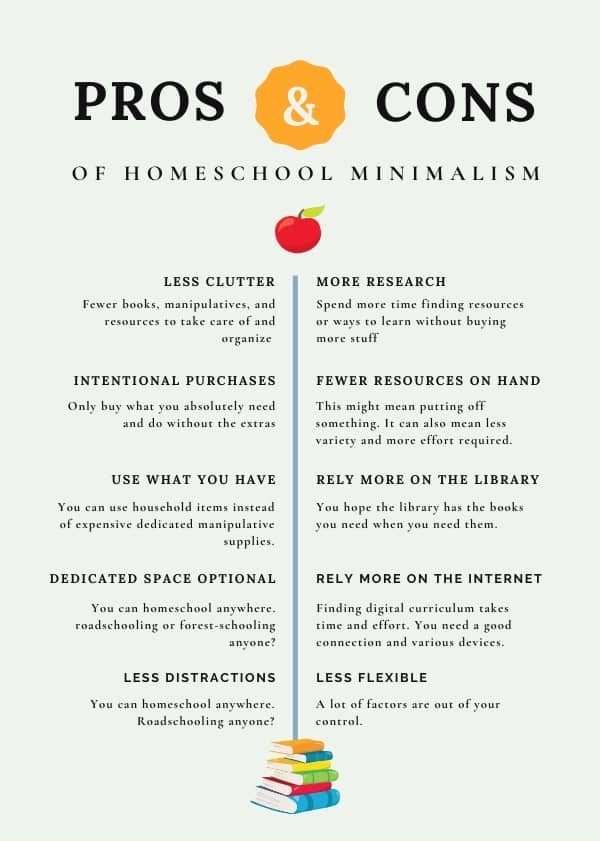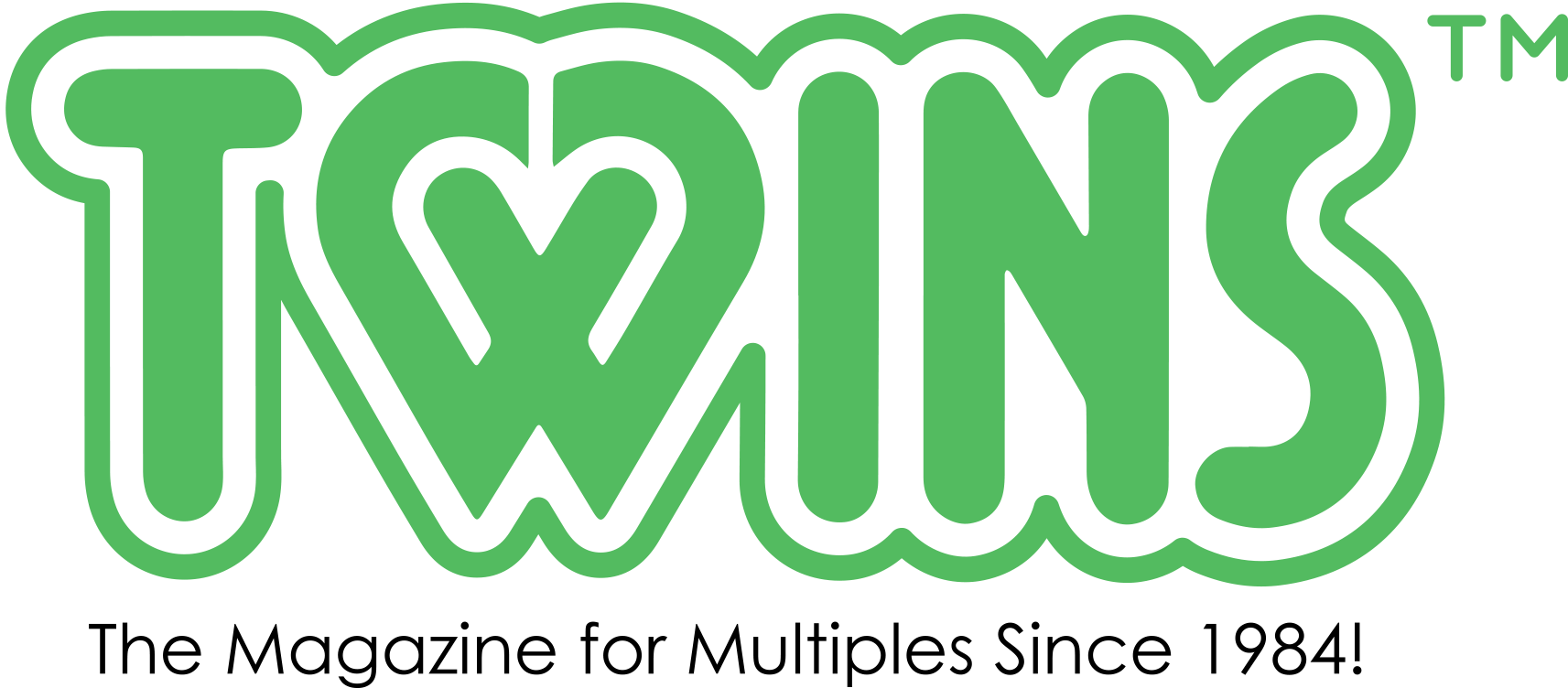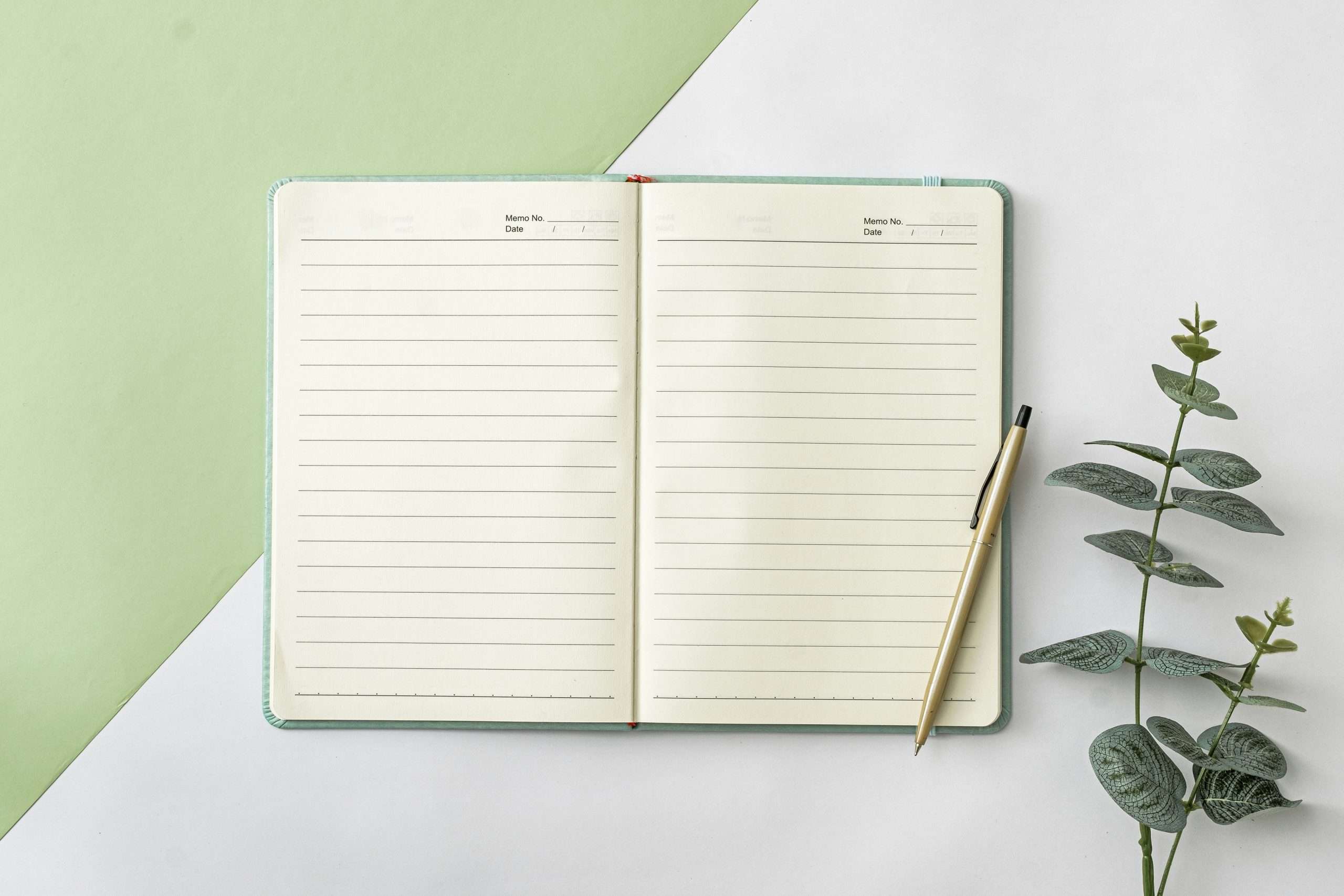First off, let me begin by saying that there is no right or wrong way to homeschool.
There may be more effective and less effective ways to homeschool, but each family has to do what they feel is right for their family and current situation.
I also want to mention that I am not a true minimalist. What I mean is that I tend towards minimalism, but I like my creature comforts and I am not a bare-bones homeschool mama.
If you are looking at possibly trying a more minimalist homeschool approach there are a number of things that you need to consider.
Is a minimalist homeschool right for you?
Minimalism is a buzzword lately and has received a lot of attention in form of best-selling books, television shows, and YouTube channels completely dedicated to it.
A couple of years ago, I was fed up with clutter and really looked into this “minimalism” thing.
We lived in a tiny house with 9 people and I was constantly tripping over things and it always looked messy. I was under continuous stress.

To me, minimalism was the answer. All I had to do was get rid of a bunch of things and then poof! my life would be magically better. Let me tell you, I decluttered and donated like a real champion.
I shredded old documents and even built a “Little Free Library” to get rid of the books that we no longer needed. But it wasn’t magical for me. Sure I had less to clean, but my life wasn’t necessarily easier.
Maybe you have decluttered too and tried minimalism. Did it work for you? The answer for our family wasn’t a solid no.
We found out that we aren’t hard-core enough to live with the bare minimum. We also realized that our growing family needed more space.
Fewer things + more space gave us the type of minimalism we were looking for. We needed to find our “just enough” version of minimalism.
I would like to share with you some of the pros and cons that we learned along our minimalism journey.
The benefits of less
The best thing about a minimalist homeschool was the fact that I had less clutter.
Fewer books, fewer manipulatives, fewer art supplies, less of everything meant that I had less to clean up at the end of the day.
These were things I didn’t have to find a place for, things I didn’t have to organize or take care of.
I donated and sold a bunch of manipulatives that we had never ever used.
Once you embrace minimalism, you find that you become more intentional with your purchases. You just decluttered!
You don’t want to have everything all pile up again so that you can donate it – again.
You think more about your curriculum choices and you buy only what you think that you will really truly need and will use. This can save you a lot of money.
I see a beautiful new curriculum every time I flip through Instagram. It looks so pretty and the children look so happy, but then I stop and think: Will I use this? Do we really need this? Is this something my children will enjoy? Does it fit in our budget?
Minimalism encourages you to make intentional purchases.
The one thing I noticed after I started becoming more intentional with my purchases is that I found out that I can look around the house and use what I already have.
I didn’t need to buy a particular book if I had a similar one. I also could use any number of household items or food to use as counters for math.
You can use what you have and still give your children a great education.
You can learn anywhere if you don’t have a lot of stuff. Plenty of families take their learning on the road and road school or school out-of-doors in the forest school way.
Technically, you don’t need to have every gadget, game, or book in order to successfully homeschool. With fewer things, you can be flexible and free.
If you can school anywhere, then a dedicated learning space is optional. Like I mentioned before, you can learn anywhere. You don’t need a “schoolroom.”
If you don’t have many books, flashcards, games, or other gimmicks to lug around and store, you can learn from a sofa, on a picnic blanket in the backyard, or at the dining room table in your house or RV.
This is especially advantageous if you live in a small space or have very little storage.
Chances are that if you have a minimalist homeschool, then other areas of your life are more likely to be kept minimal as well. This could include less laundry, fewer kitchen gadgets, less furniture, less of everything.
If you have less of everything, it is simpler to keep things organized and tidy and there are also fewer distractions.
I find that my children and I are far more productive if we aren’t distracted by mounds of laundry, toys spilled everywhere, and endless chores needing to be done.
Speaking of laundry, I learned a lot on my minimalism journey on how to streamline our laundry routine.
This doesn’t mean that my house is always neat and tidy because it isn’t.
But after a good afternoon of play time, the disaster doesn’t take much effort to clean up. That is definitely a bonus in minimalism’s favor.
What no one talks about
One of the major drawbacks of a minimalist homeschool that I experienced was an increase in the amount of time I had to spend on doing more research.
In trying to be more intentional with purchases, I spent more time reading reviews and asking others about the curriculum I was contemplating buying.
I found that I also did more research to find digital and online resources that didn’t require actual shelf space. This might not be a problem for some people, but as a mom of eight children, my time is a commodity and not to be wasted.
Another problem that I had was that after my “big purge,” I had fewer resources on hand.
Of course, I did find other things to substitute for some items, but other times I was left wishing that I hadn’t been so thorough.
Not having certain resources on hand, I was left relying on the library more. This might be fine if you have a really great library system, but our library system isn’t that great.
Many of the books and DVDs that we had borrowed in the past were disposed of or we are left waiting months until an item is finally available (winter-themed books arrive in the spring).
Sometimes it can be easier to just buy the book or DVD than wait 4-6 months for it and miss a learning opportunity (Tracks, Scats, and Signs – I’m talking about you!).
| Preview | Product | Price | |
|---|---|---|---|

|
Tracks, Scats and Signs (Take Along Guides) |
$7.95 |
Buy on Amazon |
I also found that I needed to rely more on the internet, whether it was for online courses, research, or online videos. If you live in a rural area with a terrible internet connection, this can be a major drawback.
If I didn’t have the book, I had to download the ebook or audio version digitally.
Some of our favorite documentaries, science shows, and movies are available on YouTube, Netflix, or Amazon Prime, but most of the time we found that if we watch it a lot, it was cheaper and better quality to just own a DVD copy.
Some things I chose to use digitally (Explode the Code Online) and other things I don’t.
I am the type of person that likes balance and being online too much can be more than what my kids or I can handle at times.
Sometimes we prefer to unplug and read an old-fashioned book that has been loved many times.
This next item bothers my husband a lot. He hates it when we need to repurchase something that we had, but sold or somehow got rid of.
He works hard to provide and I really don’t like to disappoint him in this way.
It has happened and I understand that we can’t see the future and hang onto everything, but I would be lying if I said it didn’t bother me at all.
My last problem with trying to run a minimalist homeschool was that I found it to be less flexible.
If I have to substitute items, books, or have to find ways to entertain toddlers because I have too few items to work with, I get stressed.
Waiting for library books that never came caused me to have to change my lesson plans. I like the flexibility of having options.
I don’t mind having to rotate or store a few toys, or having more books, games, and puzzles than the bare minimum if it adds to our home and decreases my stress levels.

I found that for our family, we needed a little bit of flexibility. Maybe it is because I have a lot of children or that their ages span from baby to adult.
Each stage has different needs. Each child learns a little differently. Some need learning aids, some work better on the computer, others work better with real books, and others need toys or creative outlets to be cooperative and less disruptive.
I definitely have learned on the journey to be more intentional and more flexible. Balance is key.
Where do you stand on the spectrum? Are you a minimalist or a maximalist?
Have you found your “just enough”? I would love to hear from you. Leave a comment below.
What helps you to keep your day balanced and what keeps you sane?
Last update on 2024-07-26 / Affiliate links / Images from Amazon Product Advertising API


